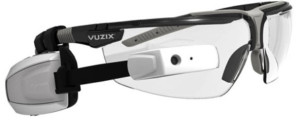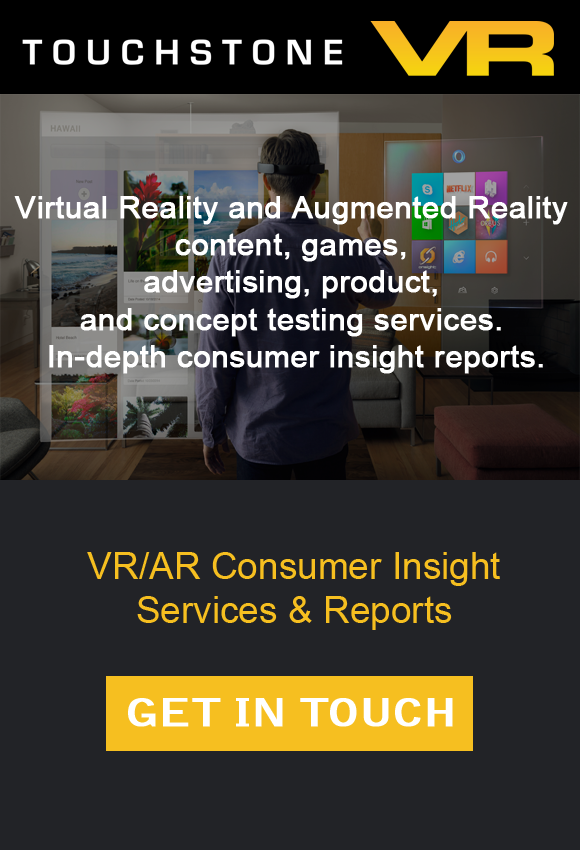List updated on 9/27/2016
It seems like only yesterday that Virtual Reality and Augmented Reality were nothing more than science fiction; a pipe dream of tech enthusiast which people thought would never pan out. Today, Virtual Reality has reached impressive levels which have shattered the simple dreams of the science fiction era; and Augmented Reality is becoming so common place that it’s being utilized by Snapchat and Pokémon Go. Utilizing smartphones for Augmented Reality is really only scratching the surface in terms of what the technology is capable of; in order to truly see what AR can do you will have to use an AR headset. There are some AR headsets out now which people have been liking, and there are some which are highly anticipated and will be releasing soon.
Microsoft HoloLens
The Microsoft HoloLens is probably one of the most notorious and talked about AR headset to date. It has been teased by Microsoft for a while and recently has become available for purchase. How it works is that it projects various screens and holograms into your field of view which you can interact with; this can include emails, streaming videos, or even rendering certain images in 3D as a hologram. The version which you can currently buy is referred to as the development edition and it’s aimed at developers and businesses who want to work on applications for the HoloLens. However there is nothing stopping your average consumer from buying it and exploring some of the applications which come preinstalled, except of course the $3,000 price tag. The $3,000 price point might seem like a tough sell but that price comes from the fact that the HoloLens is wireless; and it achieves this by having the computer which powers it stored in the headset. This setup makes the HoloLens heavy to wear, and prior users have complained about a limited field of vision; but the wireless capability is a truly unique aspect of the HoloLens and sets Microsoft apart from their competitors. This price point will definitely deter your average consumer from buying it, however that is probably what Microsoft wants due to the fact that this edition is intended for development and refining the technology. Needless to say, when the HoloLens is perfected and becomes more easily available to your average consumer it is likely to change the world as we know it.
Magic Leap
Another AR headset, and company in general, that has been turning a lot of heads lately is Magic Leap, the very secretive startup company which nearly broke records when it raised $793.5 dollars in its latest round of funding. The pros of Magic Leap are that every video or demo they have provided have been stunning and ground breaking; and it appears that Magic Leap is making some major advances with AR and VR technology. The drawbacks are that Magic Leap is surrounded in secrecy and vague information about how their technology works or when we can expect to see any kind of product. There is speculation into how their technology works that suggests the headset will be a pair of glasses not much bigger than traditional reading glasses, and they will be connected via a fiber optic cable to a pocket projector and computing unit. The speculation continues by stating that the pocket projector is what powers the glasses and enables them to maintain their small size; as opposed to the HoloLens which has all of the technology in the headset itself but is much more invasive to wear as a result. We can see in the video below how impressive the AR is, there is even a disclaimer that states “shot directly though Magic Leap technology. No special effects or composing were used in the creation of this video.’ This disclaimer is a bit of a paradox, on the one hand it is assuring to know that Magic Leap is accomplishing this through their proprietary technology and not just utilizing standard special effects; but on the other hand it still leaves us with no solid answers as to what that technology is or how it works. Even still Magic Leap has a lot of people on the edge of their seats and if there demos are any indication, then they are setting the stage for a pretty big reveal; which probably has inspired anxiety in their competition.
ODG R-7 Smart Glasses
Osterhout Design Group is an organization which is working to advance the world of Augmented Reality technology with their R-7 Smart Glasses. Their impressive R-7 Smart Glasses are currently available for purchase by all consumers and cost $2,750. The Smart Glasses tout some amazing features, both optical and technical, including their optical display which is sunlight readable and is optimized to be viewed anywhere at any time. The Smart Glasses also have location awareness so that users can interact with the world around them while wearing the glasses. Additionally the Smart Glasses have everything they need built it, so nothing additional needs to be attached for computing or power capabilities. ODG’s Smart Glasses have been utilized in a wide array of industries including, industrial, consumer, medical, security, logistics, and more; showing that AR headsets are not only for use by your average consumer, but also have a place in business as well. Before we know it AR headsets will be used by consumers and business alike, and it’s because of work by organizations like ODG.
RideOn Googles
We’ve seen AR headsets aimed at developers, and others aimed at your typical consumer; but what about an AR headset for athletes? That is exactly what we see over a RideOn Vision, a company who is producing AR lifestyle augmented reality devices, the most well know of which are their AR ski/snowboard googles. These googles work to display information while you’re skiing; whether that is directions to a particular trial, names of your friends who are nearby, or even the ability to call or text. You can also do things like record video as well as recording speeds and having the googles set up rings for you to ski through. The RideOn AR goggles are just as durable as regular googles, and are cold resistant so the googles won’t stop working if it gets too cold. The googles work in conjunction with your smartphone and 4G connection, however they will still work without a phone or 4G connection; just with a few less features. These googles are available for pre-order and cost $629 if you preorder; however they will cost $899 regularly. The expected delivery date for these AR googles is October 2016, right in time for ski season.
Vuzix
Vuzix is a company which is taking a unique approach to an AR headset with their M100 Smart Glasses. What is unique about their approach is that their Smart Glasses aren’t really glasses, they’re just something you place over normal glasses, or use just as a headset if you don’t wear glasses. The Smart Glasses from Vuzix are powered by a smartphone and paired to that smartphone via Bluetooth or Wifi. These glasses tout hands free access to essentially all of the apps which can be found on your phone, in addition to being able to take or stream HD videos and pictures, as well as recognizing audio commands. The possible applications for this type of wearable, but tiny, AR headset are numerous and will likely shape a myriad of industries in the years to come. The M100 Smart Glasses are currently available for purchase for $999.99, which seems to be a competitive price given the sleek nature of this particular AR headset.

Meta 2 Development Kit
Meta is a company who is currently in a stage that Oculus was in about a year or so ago; they are still working on perfecting their headset and currently have preorders available for the Meta 2 Development Kit, which seems to be similar to the Oculus Rift Development Kits which were available before the Oculus Rift launched. The price for the Meta 2 Development Kit is $949 and included in that is the Meta 2 headset in addition to the developer kit for developers to build and share tools; this kit gives developers a chance to see what the headset is capable of and even potentially develop their own tools for the headset. There is no specific release date for this headset and developer kit beyond the fact that it will be releasing this year. The Meta seems to be a very developer friendly tool, which is essential if we want this technology to continue to advance; developers have to feel like these AR headsets are something they can get behind in order to encourage them to continue advancing this technology to new heights.
Epson Moverio BT-300
Epson is gearing up to release its third version of its Moverio Smart Glasses, first with the BT-100, followed by the BT-200, and preorders are now open for the BT-300. The BT-200 Smart Glasses are currently available to consumers for $699.99, and the preorder price for the BT-300 Smart Glasses is still being determined; though if you were to try and preorder right now you would see the price they currently have set is $799.99. These AR glasses are much sleeker and less clunky when compared to other AR headsets, and have many cool features. The first of which is the sort of trackpad which plug into the glasses and allow for easier usage, additionally there is high resolution and a front facing camera for taking photos and videos. The Epson Moverio BT series are good for your average consumer because the price point does not break $1,000 and they are not as clunky as traditional AR headsets. Having headsets designed with developers in mind is an important step for Augmented Reality, however you also need to be sure that less savvy consumers are not being left by the way side; all types of consumers need to engage with this technology in order to insure success and mass adoption.
GlassUp
Getting back to basics, in the very heart and soul of what AR should be is GlassUp, an organization working on making AR glasses which display basic information for a very barebones AR feel. GlassUp works with smartphones and has a touchpad for easier navigation and a better user experience. What sets GlassUp apart is that all information displayed while wearing the glasses is in a standard green color, and while the flashiness you would typically expect in an AR headset is missing it is still conveying the same basic information. This barebones feel makes more sense when you take a look at the price which is roughly $350, much less than other AR headsets on the market right now. This AR headset can be seen as a good price for what you are getting, and could serve as a good introduction for people who are interested in AR but not sure that they want to purchase a high end headset just yet.
Atheer Air Glasses
In an effort to make more jobs “deskless” we find Atheer’s Air Glasses, which are aimed at enhancing the abilities of various industries through Augmented Reality. The glasses are powered through a tiny computing pack which looks like it would be able to fit in your pocket. This pack has all the computing power, WiFi and Bluetooth capabilities that you will need to power the headset. The Atheer Air Glasses are currently being used to help the insurance, logistics, energy and healthcare industries; as seen in the video below. The Atheer Air Glasses are available for purchase and cost $3,950, which might deter your average consumer, but would be more appropriate for businesses. While personal use of AR headsets is important for the mainstream appeal of consumers, it is also important that we keep this technology evolving for industrial use as well. The potential of Augmented Reality should not be limited to that of a home computer, nor should only be utilized in some industries. Atheer represents an important step in the mainstream adoption of AR technology in the working world and as they, and other companies, continue to improve and refine AR technology we will see it being adopted by more industries at greater rates.
Much like Virtual Reality, Augmented Reality is on the rise and there are many headsets coming out soon which are sure to change the way we think about technology. People in general are becoming more interested in AR and VR technology; however it is important that we continue to explore not only personal applications of these technologies but industrial applications as well. VR and AR are poised to become as big and as common place as smartphones, and in order to make that happen we need to make sure that consumers see the value across industries and in their own lives. More importantly we need to make sure that these headsets are user friendly so the less savvy consumers will still want to use them, and will feel compelled to buy them. As VR and AR technology continues to grow the number of headsets grows with it, some made with developers in mind, some with certain industries in mind, and some made with your average consumer in mind; all so that if you’re interested in AR you can find a headset that suits your need and fits your lifestyle.




I’d be interested in seeing the Penny.se “C weAR 30” AR glasses in such a comparison!